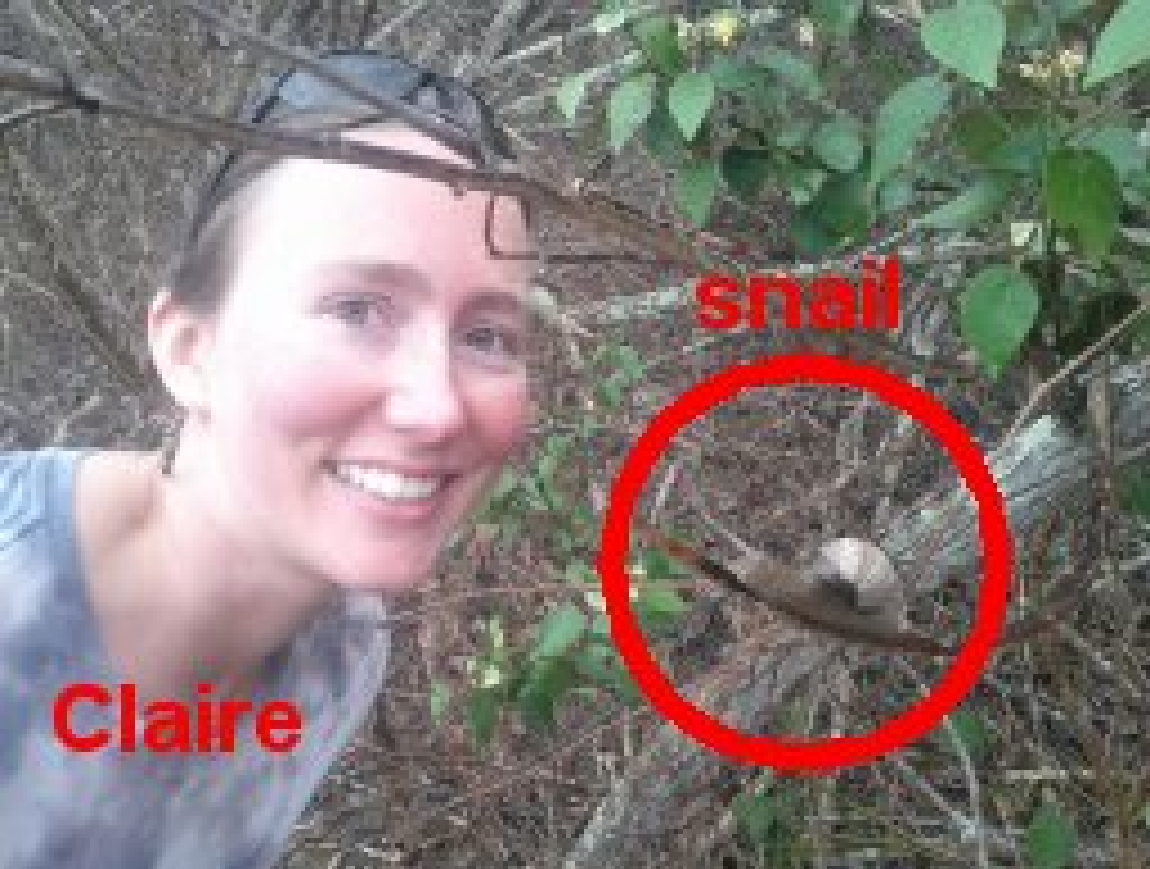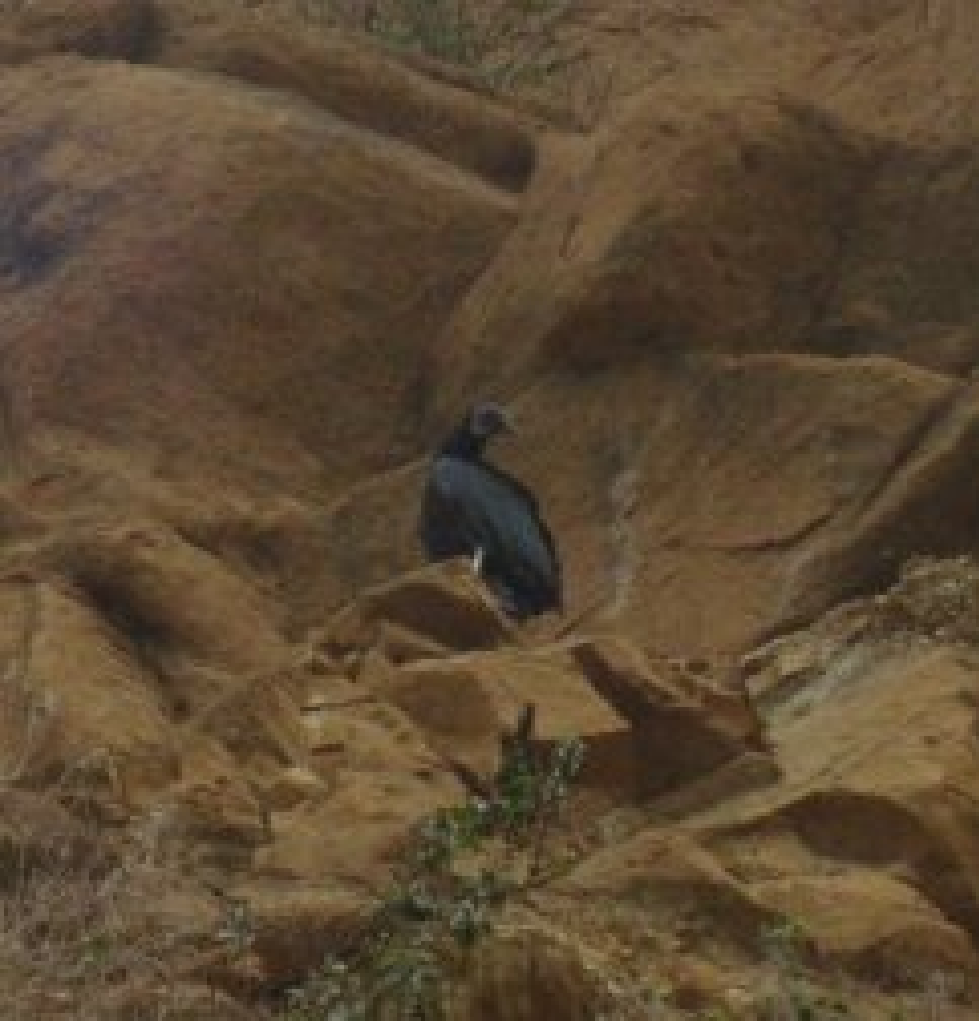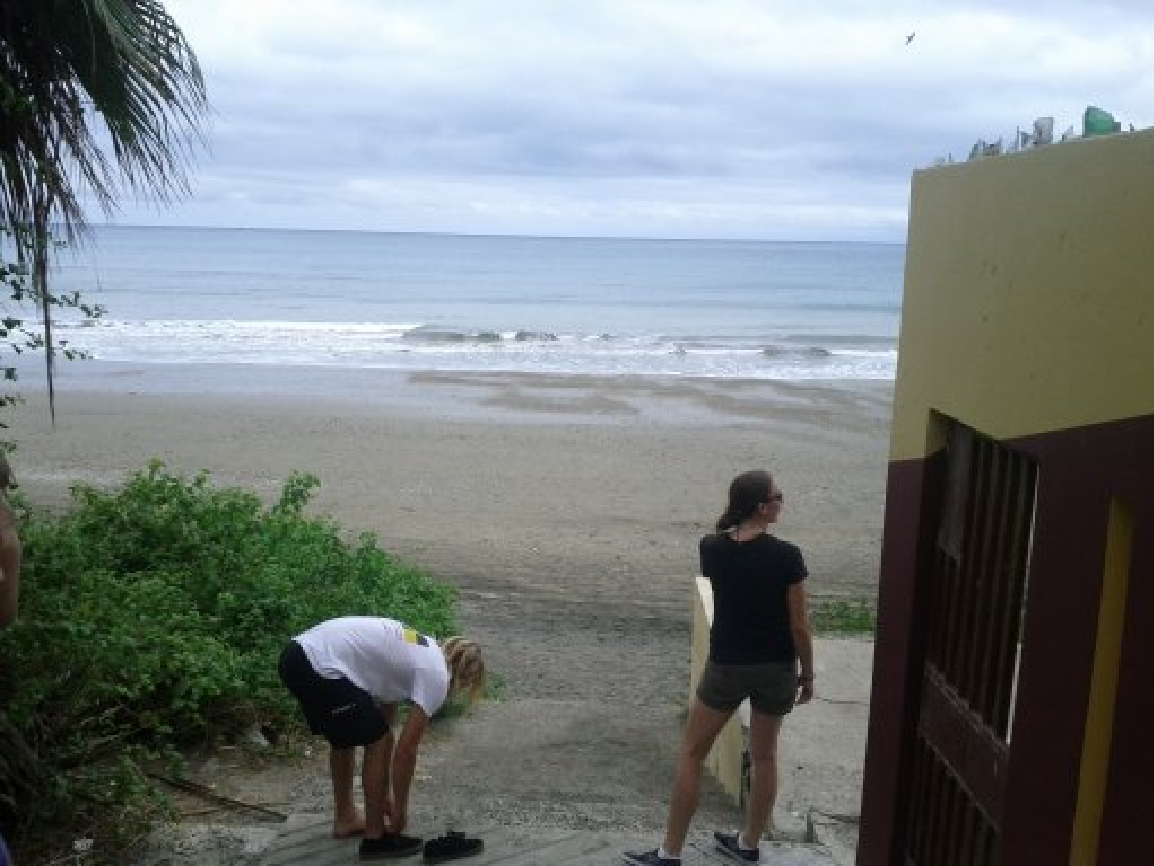Before our big trip, a few of us decided we should take a small trip in Ecuador. We had to fly all the way down here anyway – why not make the most of it?
Who exactly are “we”? Claire Parker (UC Santa Cruz), Brian Peters (Stanford), and Nick Hawco (Woods Hole Oceanographic Institute) and myself – all graduate students – plus Geoffrey Smith (UC Santa Cruz) a Research Specialist.
Day 1.
After a quick 4 hour flight from Miami, we arrived in Quito (Ecuador’s capital). The landscape is very mountainous in this part of Ecuador, and after an hour’s drive winding around on the dark roads we arrived at a nice European style hotel. That night we witnessed a sort of street brawl involving dull swords/knives/machetes. Surprisingly no blood was shed! Most of us decided to stay in and drink our beers behind the barred windows; Geo ventured out about a block before someone tried to sell him “coca” at which point he turned back.
Day 2.
We had most of the day to explore Quito and chose to walk around. On our way to Old Town we found Parque (park) El Ejido with really fun “ziplines” that were a seat from a swing suspended on a cable between two poles with a tire bumper at the end of the line. We all decided it was a lot of fun, and probably would result in many lawsuits in the USA.
Geo on the swing.
We visited the Basilica of Quito where they have a lot of statues of virgins (not all Mary). Across from the church is a large hill with a HUGE winged statue depicting the virgin of Quito. We didn’t feel like walking all the stairs up to her, but she was nonetheless impressive.
By chance, we caught a glimpse of the President of Ecuador, who comes out every Monday to talk with his countrymen and wave. It had a full band playing music and lots of soldiers wearing their dress uniform and riding horses.
That evening we caught a flight to Manta on Aerogal airlines (one of 2 national airlines). What service! Just like flying used to be. Free checked bags, beverage service and a sandwich (in a 35 min flight!), followed by a chocolate bonbon as we de-planed.
Because we’re crazy, or half-wits, or some of both, we decided to rent a car in Manta so we could do some site-seeing. It only took about 5 minutes before we got totally lost in a neighborhood with a ton of stray cats. Bear in mind it’s ~9 p.m. and this neighborhood isn’t looking too nice or super friendly… so we continue driving until we spot a police station. I had no trouble going inside and declaring “Estamos perdidos!” [translation: We’re lost!]. The police officer inside was very kind and tried to show us how to get to our hotel using our map, but we were really confused when he kept holding the map upside down and pointing to various roundabouts. So he decided it would be far easier to just escort us there – on his motorcycle, with flashing lights! It was quite a 5 minute drive and I bet the hotel doorman was really confused when we pulled up with a police escort, but it got us there! That officer is probably still laughing at us…
Day 3.
We picked up a GPS from the rental agency (see Ecuadorian Driving 101 post to follow), and made our way to Machalilla National Park (their only one!) After driving through a couple microclimates of rainforest and trees that looked dead from being too dry we arrived at the Playa de Frailes which is part of the park. Pedro, the very friendly ranger, gave us a brief introduction, told us not to touch the animals or pick the plants, and we were off to explore their beach.
We saw a ton of small red crabs in the sand and thousands of tiny sea snails no bigger than a garbanzo bean. On the rocky intertidal we found a bunch of greenish crabs that could “hop” around and reminded us of frogs. We also spotted a very cool looking vulture or condor (we’re chemists, not biologists! None of us could ID it). We took a short hike to a lookout point and found what we thought were huge snails, until a ranger came along and told us they can be up to 4 inches long!


Day 4.
We decided to not brave the roads and drive up to Portoviejo, because driving is really that stressful here. Instead we walked/darted around Manta on foot. Darted, because cars definitely have the right of way and I’m mildly convinced taxis actually try to run you over… We walked along El Murcielago, which is the main beach here.

We also went to the local supermarket to stock up on coffee and candy for our trip. There were all sorts of tropical fruits in the produce section that we don’t find back at home. What was most striking to me was looking at the other shoppers’ carts in the checkout lines: 90% of what people were buying was fresh produce and raw meat/seafood. There was very little pre-made food being purchased (and also very few overweight people). We also got a chance to flip through the local newspaper. We found their Op Ed section with political cartoons interesting, as it depicted their view of the USA’s recent government shutdown, and was accompanied by a short piece which seemed incredulous that it had not done dramatic damage to the USA’s own economy.
The elephant/ball says "Republican" and building says "Global Financial System".
Afterwards we got ceviche lunch for $3/person and trekked back to our hotel with our goods, we refueled the rental car (~$2/gallon) and returned it. Then we walked over to the port. We were driven to the customs/immigration/drug-sniffing-dog, then our ship. Once aboard, we got to work setting up lab space and our room, followed by dinner and blogging. While sitting and writing this with Claire, we reflected on the fact that Ecuador is an extremely clean country; while the sidewalks and streets aren’t super well paved, there is almost no garbage on the side of the road.
Later we’re going on a tour of the ship, and hopefully figuring out what keeps making loud noises right next to our bunks!


